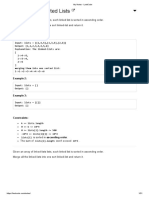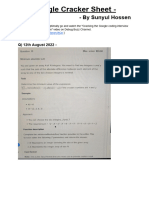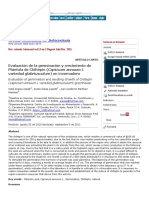0% found this document useful (0 votes)
660 views29 pagesMost Used Problem Solving Patterns
This document discusses problem solving patterns for product-based company interviews. It describes three patterns: recognizing frequently occurring patterns and mapping new questions to them, two pointers, and sliding windows. Two pointers uses two pointers that traverse a data structure together to find pairs or other relationships. Sliding windows involves moving a window over an array or list to perform operations on subsets. Examples and pseudocode are provided for two pointers and sliding windows patterns.
Uploaded by
Saravanakumar RadhakrishnanCopyright
© © All Rights Reserved
We take content rights seriously. If you suspect this is your content, claim it here.
Available Formats
Download as PDF, TXT or read online on Scribd
0% found this document useful (0 votes)
660 views29 pagesMost Used Problem Solving Patterns
This document discusses problem solving patterns for product-based company interviews. It describes three patterns: recognizing frequently occurring patterns and mapping new questions to them, two pointers, and sliding windows. Two pointers uses two pointers that traverse a data structure together to find pairs or other relationships. Sliding windows involves moving a window over an array or list to perform operations on subsets. Examples and pseudocode are provided for two pointers and sliding windows patterns.
Uploaded by
Saravanakumar RadhakrishnanCopyright
© © All Rights Reserved
We take content rights seriously. If you suspect this is your content, claim it here.
Available Formats
Download as PDF, TXT or read online on Scribd
/ 29

























































































